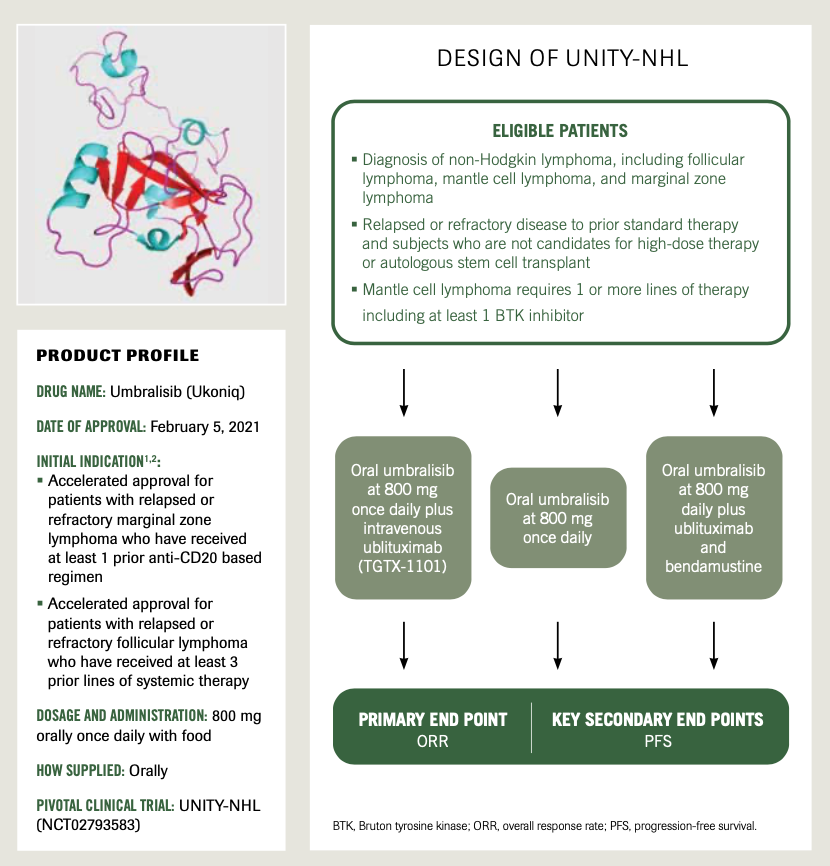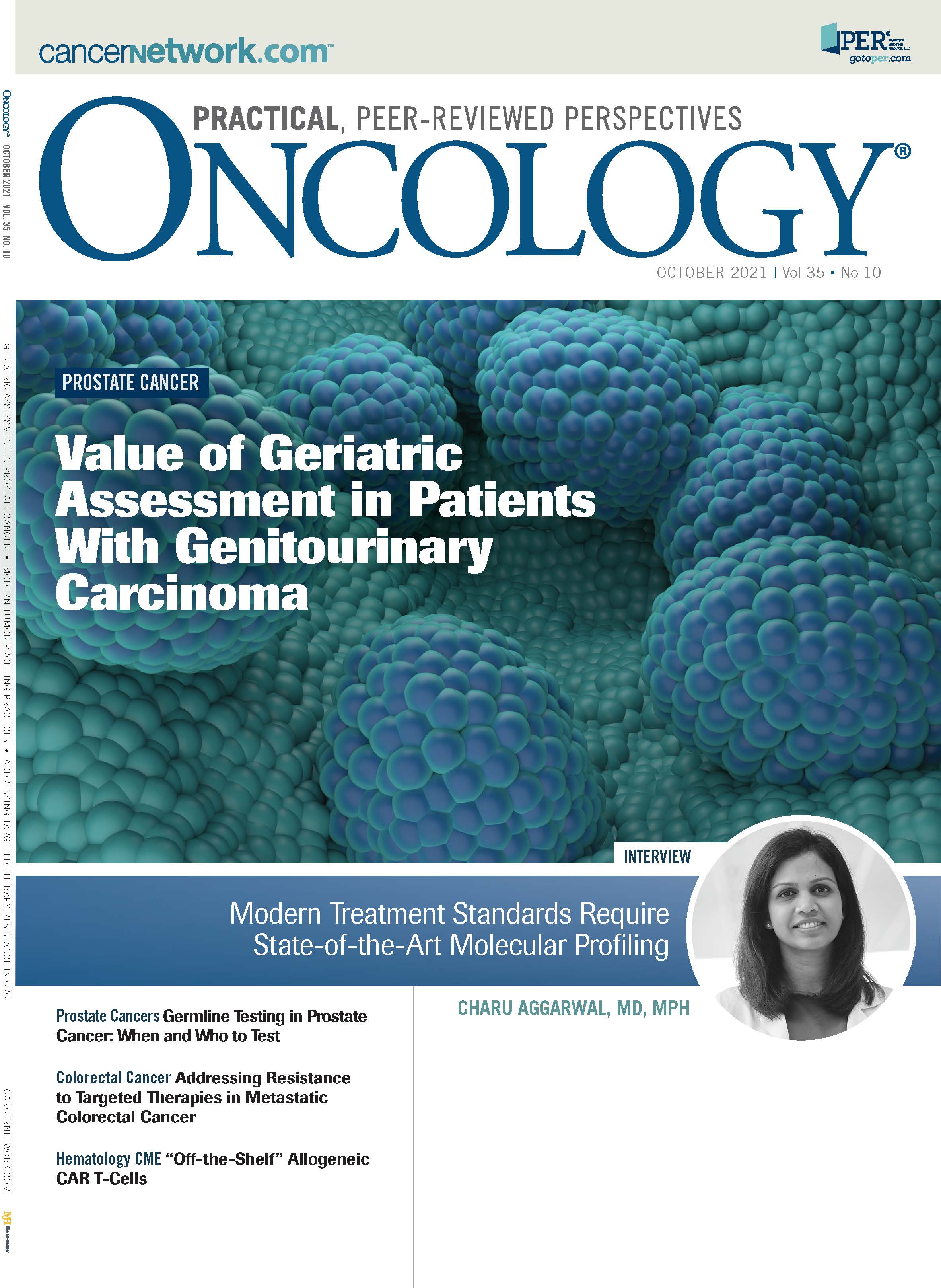Expert Commentary on the Product Profile of Umbralisib for Lymphoma
In an interview with ONCOLOGY®, Douglas Braun, CSP, PharmD, RPh, offers a comprehensive review of real-world treatment considerations of umbralisib as therapy for patients with previously treated follicular and marginal zone lymphoma.
Douglas Braun, CSP, PharmD, RPh
Senior Pharmacy Director
American Oncology Network (AON)
Fort Myers, FL

Q: What are some of the biggest concerns with umbralisib’s toxicity profile? Have any new safety concerns emerged in the real-world treatment setting?
We haven’t seen anything that stood out beyond what we were already prepared for. Specifically, [events such as] diarrhea or nausea tend to be the most common, which is fine with us.1 My pharmacists, my nurses, and I do a very robust job with counseling our patients before they start therapy to make sure they understand what the potential adverse effects [AEs] are and how to manage them. We talk to patients about how to anticipate their diarrhea and how to manage nausea or fatigue, and we find that if we give them a little bit of education ahead of time, they can recognize [the AEs] when they happen. Being [proactive] about AEs helps patients get over the initial adherence barrier and helps them stay on the therapy longer. It seems to be working well.
Now, [AEs] like nephrotoxicity or colitis are out of our control. The important thing that we specify with our patients is to make sure that they don’t skip scheduled doctor’s appointments or lab appointments. Especially with [the COVID-19 pandemic], it’s been difficult. Patients are afraid to leave their houses or afraid to go to the clinic. With a drug like this and with a higher risk of issues, potentially for nephrotoxicity or colitis, it’s important that the doctor stay on top of that. Often, the only way to do that is to see the patient, do a scan, or do lab work. It is important to make sure we let those patients know that if they have lab appointments, it’s vital that they don’t miss them.
Q: How does this agent stand up to other PI3K inhibitors?
When we think of PI3K inhibitors, we think of a drug in another disease state but with a similar mechanism of action [that has its] own unique set of issues, specifically with hyperglycemia.2 We must be very aggressive in monitoring our patients. It opens a whole other can of worms by having spent so much time working on treating and managing the AEs. Hyperglycemia is not an antibody-dependent enhancement [ADE] of this drug, which removes a significant amount of time and attention of focusing on ADE management and allows us to focus on the patient and their disease management
Q: Are dosing modifications common with this agent?
With any drug, you [may] see issues with those limitations, whether it’s toxicities or kidney disease or hepatic impairment. We haven’t seen anything so far because, to my knowledge, I don’t think there [has been] any dose adjustment [due to] renal impairment, which is surprising [given] the agent’s potential for toxicity. The same thing [has been seen] with hepatic impairment as well: no dose adjustments. Any dose reductions [would be] due to AE management and those limiting toxicities. We have had a couple of patients who have been dose reduced based on AEs, but so far, no patients have discontinued therapy due to intolerability, so that’s been a good sign.
Q: Are there drug interactions clinicians should be aware of?
The package insert does not speak of any specific drug-related contraindication. [However], there always will be something, unfortunately, with any drug. Patients have comorbidities or allergies and sometimes they have advanced age, so they could be on 10 to 14 different medications. Interactions become an issue that we must be very careful about. We do a drug scan every time we fill a prescription for a patient beforehand to make sure that nothing will interact with or contraindicate the drug. We haven’t come across anything yet so far with umbralisib, thankfully.
Q: Would you like to add anything else?
Umbralisib is an interesting drug because it works in a unique way. From the trial results, it shows that patients are getting good results. Time will tell once we have some more patients on therapy. We are anticipating good long-term data [regarding] safety and efficacy. I’m excited to see where it’s going. We think it’s a good drug with a good space that offers patients an option where there wasn’t one offered in another line of therapy. Umbralisib provides a reasonable choice for those who can’t tolerate prior lines of therapy. It’s always great to know that these drug companies are coming up with more options for these patients.
Financial Disclosure: The authors have no significant financial interest in or other relationship with the manufacturer of any product or provider of any service mentioned in this article.

References
1. Ukoniq. Prescribing information. TG Therapeutics; 2021. Accessed August 17, 2021. https://bit.ly/3yVJE0N
2. FDA grants accelerated approval to umbralisib for marginal zone lymphoma and follicular lymphoma. FDA. February 5, 2021. Accessed August 17, 2021.
https://bit.ly/3g9xhXo

Highlighting Insights From the Marginal Zone Lymphoma Workshop
Clinicians outline the significance of the MZL Workshop, where a gathering of international experts in the field discussed updates in the disease state.